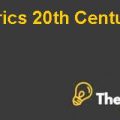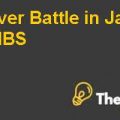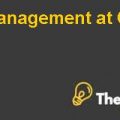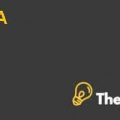
DARDEN CAPITAL MANAGEMENT: THE MONTICELLO FUND
Introduction
Darden Capital Management had the total assets under management of over $3 million and was held in three funds: the Darden Fund, Monticello Fund, and Jefferson Fund.
Among these three funds, Monticello Fund used fundamental analysis to identify and invest in companies that were well-positioned for growth but inexpensively valued. The vision of the fund team was to look for stocks that would generate above-normal returns over a one- to four-year horizon.
Proposals
The fund managed to collect data about six potential companies that they were considering to incorporate in the portfolio. However, they had to narrow down the number of companies to two or three that fulfilled the strategic objectives of the fund.
For this purpose, the team members suggested three different proposals on the basis of risk assessment and the expected return to be generated from those alternatives.
Proposal 1
According to the first proposal by Nandini Bose and Brian Maguire, the fund should have chosen the stock of Micron Technologies based on the high expected return potential of this stock. In the past years, the company’s stock had declined dramatically from its peak in the year 2000. However, there was a strong probability that it would revive back its position and the returns would increase as a result.
With that said, the trade-off between risk and return suggests that there is a high risk attached to this security that is against the strategic objective of the fund.
Proposal 2
According to the second proposal, which was submitted by David Khtikian, the first proposal had a substantially higher level of risk that was unacceptable for the fund. According to the standard deviations of the selected companies for the last five years, Micron had the highest standard deviation.
On the basis of ratio of anticipated return to the standard deviation of returns, the stocks of Boise Cascade and New York Times were suggested for the portfolio. It is because these stocks had the best returns at the corresponding level of risk.
Proposal 3
The third proposal, which was submitted by Charles Hill, presented an agreement with the fact that both the risk and return should be considered before choosing any stock for the portfolio. However, when it comes to the portfolio, the correlation between the sticks also becomes a determinant factor. It is because the correlation has the potential to increase or decrease the overall risk of the portfolio. If the correlation is strong and positive then the risk level will increase more than the individual stocks and vice versa.
This correlation can be measured as the slope of a linear-regression line, commonly called the “beta.” According to this proposal, Mylan Labs and Placer Dome should be selected as they maintained the highest beta adjusted returns.
Proposal 4
The fourth proposal was in relation with the third proposal as it suggested a 50-50 proportion between the selected stocks for the portfolio. Since, Placer Dome has a very high risk but has yielded a low return in the past; hence, there is a need to find the optimal level of proportion between the proposed stocks.
View on the Proposals and Likely Decision by Team Monticello Fund
The proposals should be judged on the basis of both the risk and return along with the consideration of correlation. It is because the prime reason of the formation of a portfolio is to diversify the risk in an optimal way to get the highest return from the portfolio.
The first proposal does not consider the risk level at all, so it cannot be considered in the portfolio. The second proposal is a better alternative in relation to the first proposal. However, if Boise Cascade and New York Times appear to have a strong and positive correlation between them; then the risk level can exceed the maximum accepted level of risk.
For this purpose, the third proposal of considering Mylan Labs and Placer Dome will be selected. The fourth proposal cannot be entirely rejected because there is a need to find the optimal level of proportion between the stocks that provide the highest return within the acceptable level of risk.
Appropriate Measure of Risk
In general, there are five principal risk measures: alpha, beta, r-squared, standard deviation and the Sharpe ratio. For portfolio management, the standard deviation of the stocks describes the level of risk of an individual stock; whereas the correlation measures the inter-dependency between the stocks and normalizes the risk level. The company should use the same risk measure to compare the stocks.
In the CAPM model, the appropriate measure of risk of any asset or portfolio p is given by its "beta."
Superior performance in terms of CAPM can be measured by "alpha," which is the incremental expected return, resulting from managerial information. This can be represented as: ..................................
This is just a sample partial case solution. Please place the order on the website to order your own originally done case solution.
Investment strategy solutions Darden Capital Management student portfolio management team in 2004 examined. Case materials allow students to appreciate the CAPM based on expected returns using the market data. The case focuses on the introduction of portfolio decision on the allocation of funds, the study of the importance of various investment risk metrics, intuition development of diversification, market risk and the capital-asset pricing model, the building of a judgment about how to properly estimate the parameters using the CAPM available market data, and discussion of The concept of market efficiency.
This Darden study. "Hide
by Michael J. Schill Source: Darden School of Business 10 pages. Publication Date: December 17, 2004. Prod. #: UV0517-PDF-ENG













